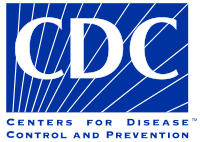
Photo from wikipedia
In the United States, the treatment of ischemic vascular disease has reached a point of reckoning. Despite years of investment and development of safe, available, and effective evidence-based practice to… Click to show full abstract
In the United States, the treatment of ischemic vascular disease has reached a point of reckoning. Despite years of investment and development of safe, available, and effective evidence-based practice to reduce cardiovascular (CV) risk, those with atherosclerotic cardiovascular disease (ASCVD), and especially those with peripheral artery disease (PAD), have not been justly rewarded with improvements in clinical outcomes. All the while, rates of diabetes and food-related chronic diseases are on the rise, and increasing costs have reduced access to care and further destabilize efforts to improve community health. Misaligned incentives that glorify profits have spurred healthcare market consolidation, which has not reduced the costs of care nor the quality. At the 2022 Scientific Sessions of the American Heart Association, Robert Califf, MD, commissioner of the Food and Drug Administration, petitioned for the ‘need to do something more than we’re currently doing, and something different, because what we’re doing now has stalled and is not working the way it should’.1 So, what should be done? To begin, it should be acknowledged that low utilization of evidence-based practice and the consequent burden of poor outcomes are disproportionally carried by marginalized populations enduring social, political, and economic isolation.2 This fact is perhaps no more relevant than among the population with PAD. Vascular specialists will recognize the perennial challenges with low disease awareness that is, in part, cultivated by a lack of support for PAD screening3 along with layered health-related social needs that present barriers to optimal vascular health. With declining access to care, rural patients with CV disease are significantly less likely to receive evidence-based practice and are more likely to experience worse outcomes.4 The non-Hispanic Black population experiences a higher prevalence of PAD, presents with more advanced symptoms, and suffers rates of nontraumatic major amputation that are four times higher than the non-Hispanic White population. These striking differences in care and outcomes have rallied a national call to action to improve vascular care and reduce amputations by 20% by 2030.5 However, prevailing economic forces exacerbate these disparities, presenting significant headwinds for the clinician motivated to seek change. On their own, healthcare providers do not possess the resources, incentives, or bandwidth to remedy these prodigious challenges. The inability to effectively address barriers to high-quality, equitable care also creates an environment of moral injury for professionals and engenders mistrust among patients. Apathy and burnout ensue. In a ‘sorry pal, you’re on your own’ society, the magnitude of the underserved is likely to grow, continuing to frustrate healthcare delivery as margins to deliver care tighten and further strain the healthcare team. Perhaps more aptly, what can be done? To create the sustainable change Commissioner Califf has called for is likely to require broad realignment of incentives, a shared vision, with multistakeholder engagement to implement meaningful change. In October 2021, the Centers for Medicare and Medicaid Services (CMS) Innovation Center released their white paper announcing plans to align 100% of Medicare beneficiaries with riskbased, value-oriented payment arrangements by 2030.6 Leading health policy experts have recommended that the CMS Innovation Center accelerates the movement to valuebased care to drive broad transformation. With strategic objectives from CMS to (a) drive accountable care, (b) advance health equity, (c) support innovation, (d) address affordability, and (e) partner to achieve system transformation, there exists a unique opportunity for specialists to lead in implementing change among those with vascular disease. To be sure, these priorities and the rapidly increasing Translating vascular health equity into action
Journal Title: Vascular medicine
Year Published: 2023
Link to full text (if available)
Share on Social Media: Sign Up to like & get
recommendations!